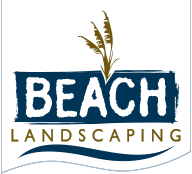What’s Blooming in June
Plants and flowers in season:
– Magnolias
– Daylilies
– Waterlilies
– Roses
– Poppies
– Coneflowers
– Hydrangeas
– Peonies
Fruits and vegetables in season:
– Asparagus
– Broccoli
– Green beans
– Mushrooms
– Strawberries
– Cherries
– Mangoes
– Peaches
Best annual flowers to plant:
– Begonias
– Marigolds
– Angelonia
– Cosmos
– Petunias
– Zinnias

Magnolia tree

Blooming ming toy daylily

Big leaf hydrangea

Blooming coneflower
June Maintenance Tips
Fertilizing:
The best time to fertilize your lawn is between April and August, during the growing season of your grass. Fertilizing your lawn in June should be done with a low-nitrogen fertilizer. Nitrogen-rich fertilizers are more appropriate to use earlier in the spring to promote initial growth in the beginning of your lawns growing season. A fertilizer with a high amount of nitrogen could potentially cause burning in your lawn in the heat of June.
Pruning:
It is best to do your pruning in the winter months between November and March, while the plant is dormant. However, pruning in June could be beneficial if you are trying to slow down the growth of your plant.
Pests and diseases:
Some common pests and diseases to watch out for in June include:
– Japanese Beetles:
These leaf eating bugs are most commonly found on canna lillies. An organic beetle fighting spray will treat your plant by killing the beetles as they eat the leaves. A good product to use is the Harris Garden Insect Killer. Several treatments may be necessary to fully treat the plant. You may also use this spray to protect your plants before damage is even done.
– Leaf-footed bugs
These insects like to suck the juice out of leaves and fruit, leaving behind patches of discoloration. Leaf-footed bugs are not a danger to the health of your plants. Even fruit with this discoloration is still edible. Pyrethroid-based insecticides are best to treat these pests
– Aphids
These bugs feed on sap off of new leaves. Aphids are most commonly found on Crape Myrtles and on Podocarpus. Plant-derived oils such as neem or canola oil are most effective in treating Aphids.
– Dollar spots
This is a grass infecting fungus that is most active in the hot summer months, and is most commonly found on bermuda grass. Neem Oil, our natural fungicide alternative is the best way to treat this fungus.
Celebrating National Pollinators Month:
In the month of June, we acknowledge and appreciate the essential work of our native pollinators by celebrating National Pollinators Month! Pollinators are insects and animals that transfer pollen from one plant to another, which is required for plants to be able to produce fruits, vegetables, and nuts. Pollinators native to South Carolina include bees, butterflies, and hummingbirds.
Plants that are great for attracting pollinators include:
– Bee balm, scarlet salvia, petunia, and coral bells to attract Hummingbirds – Milkweed, black-eyed Susan, purple cone flowers, coreopsis, verbena, lantana and impatiens to attract butterflies
– Anise, blanket flower, geraniums, and coreopsis to attract bees.







